Iceland is open for travel. Check volcano updates here
The Laugavegur trail is the best-known trek in Iceland. National Geographic has listed it as one of the twenty top trekking trails on the planet!
View our selection of Laugavegur Trail Hiking Tours.

Iceland’s Laugavegur trail is world-famous, and rightfully so. Hiking Laugavegur Trail is one of the best experiences you can have in Iceland, traversing stunning geothermal landscapes, forests, glaciers, and multicolored rhyolite mountains.
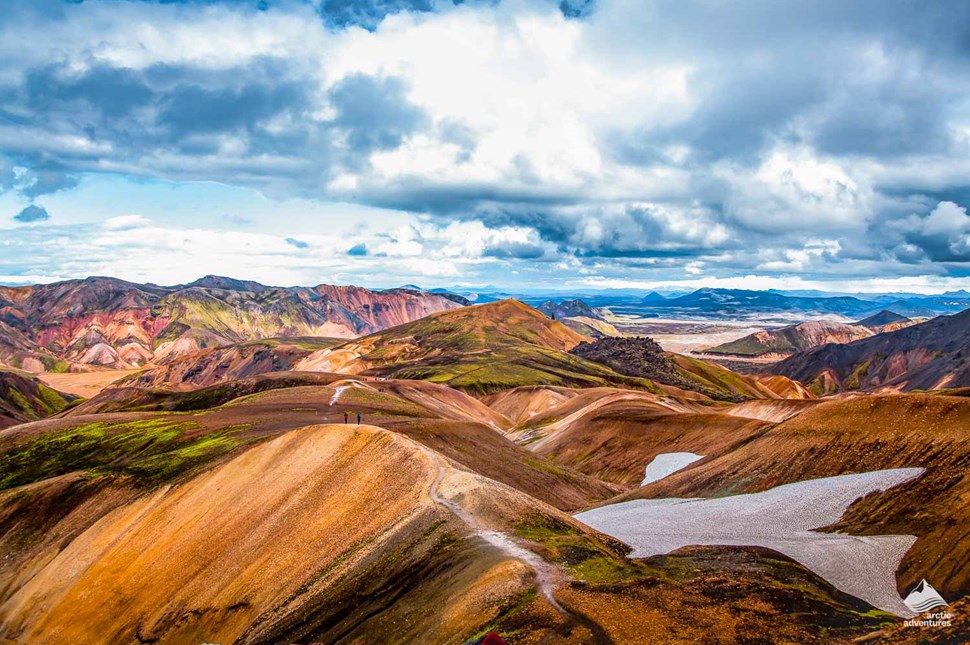
The trail, also known as ‘The Hot Springs Route’, is a truly one-of-a-kind trek. From the natural hot springs of Landmannalaugar to the glacial valley of Þórsmörk.
The 55 km, multi-day hike encompasses the Southern Highlands’ colorful rhyolite mountains all the way to the forests and lush greenery of the Þórsmörk valley. You will be surrounded by magnificent scenery and exceptional geological phenomena as part of the trail, all the way.
Laugavegur Trail is certainly one of the best trekking and hiking routes in Iceland. In fact, National Geographic recently wrote that this tour was one of the best hikes in the world.
We’ll tell you everything you need to know about this incredible site, from location to what to expect to practical details. But first, the all-important question: what tours go to Laugavegur trail?
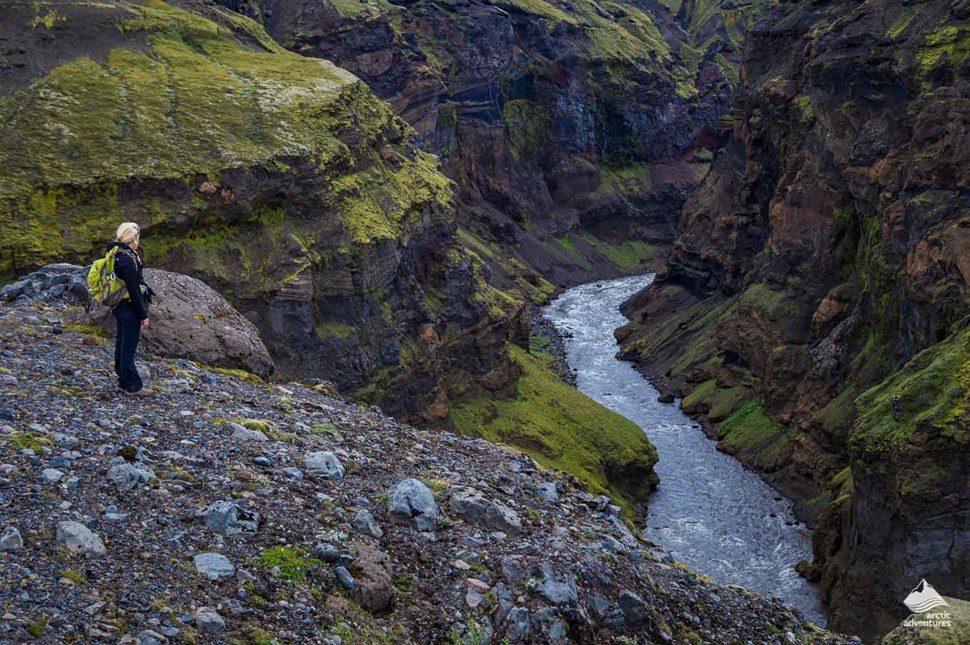
The following are among the best-guided tours to Laugavegur Trail:
GPS 64°08’25.86″ N -21°55’22.74″ W
The Laugavegur trail is within the interior of South Iceland. The trekking trail stretches between Þórsmörk (151 km from Reykjavík) and Landmannalaugar (188 km from Reykjavík). Both places can only be accessed using rugged mountain roads, a 4×4 vehicle insured to cross rivers is required.
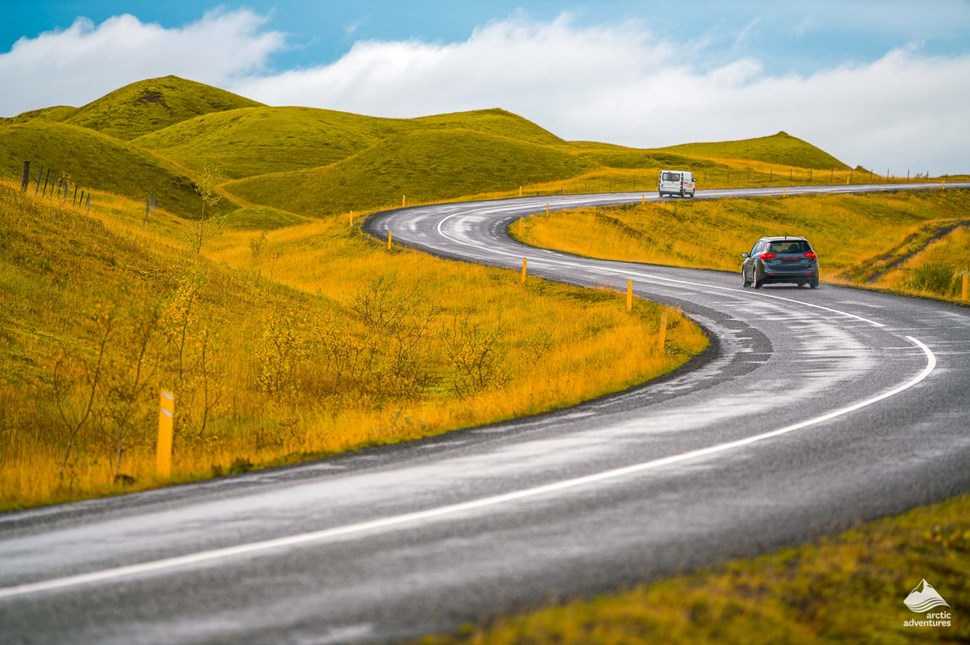
To get to these places on a private tour, you can either rent a car or go by bus (not advised). It may seem more expensive, but it is safer to go with a professional guide and a tour group. The landscape can be tricky to navigate in some areas.
If you do choose to self-drive, the trek starts in Landmannalaugar. The quickest route is through West Iceland via Selfossor Þingvellir National Park. Alternatively, you can go through the more scenic South coast. If you are visiting Landmannalaugar on a self-drive tour, you will need a four-wheel-drive and to take the roads along Fjallabaksleið nyrðri (F208) or Dómadalsleið (F225).
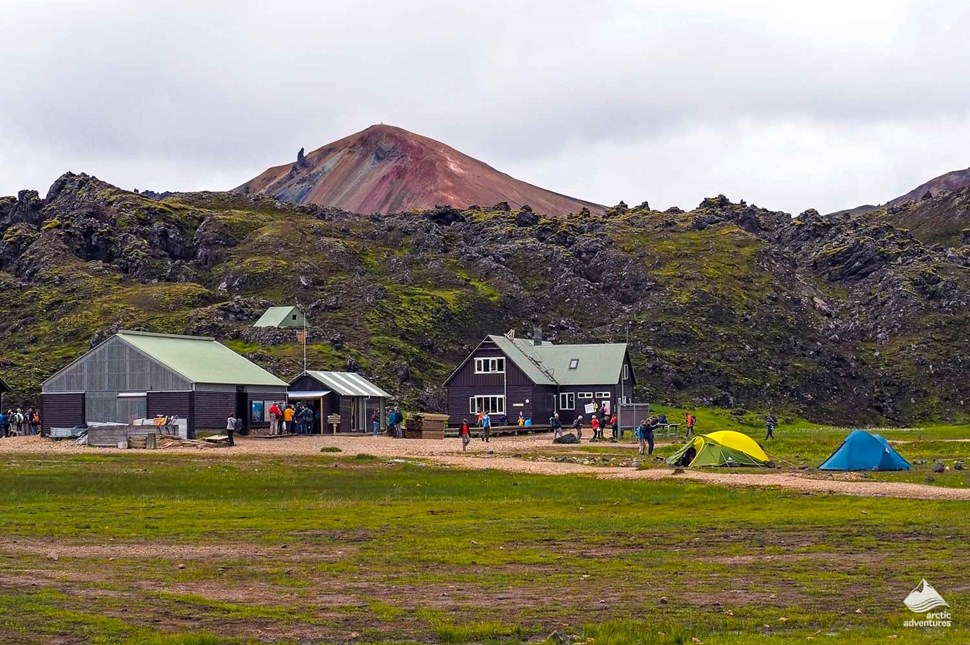
Along the route, there are six cabins and camping grounds, owned by Ferðafélag Íslands (Iceland Touring Association). The 7 cabins are fairly large, having enough room for at least 52 people and up to 78.
Volcano Huts are located in Húsadalur Valley in the Þórsmörk Nature Reserve.
The cabins are located in Landmannalaugar, Hrafntinnusker, Álftavatn, Hvanngil; huts in Botnar, Emstrur, and Þórsmörk.
Volcano Huts are located in Húsadalur Valley in the Þórsmörk Nature Reserve, near the end of the trek. They have hot showers and a small kitchen, but ‘beds’ sell out fast, so it is best to book far in advance as it is the only way to guarantee your place.

All the huts sell some supplies, such as backpacking dried food, soda, and candy bars as well as stoves and gas, but expect to pay a premium. The cost per person, per night, ranges from 6000 kr (US$46) in Þverbrekknamúli, up to 9000 kr (US$70) in Álftavatn and Hrafntinnusker.
The huts along the way are very basic, with sleeping bag accommodation split into dormitories. In the bigger huts you can expect both running water and water toilets but in some of the smaller ones, you will have to fetch water from a nearby stream and use an outhouse.
Day Guests – guests who only visit for part of the day and are not staying overnight – will have to pay a 500 kr (US$4) facility fee when using the hut’s facilities, such as the lunch shelter, toilet or outdoor grill.
All of the cabins along the way have suitable camping grounds. Camping prices start from 2000 kr (US$15) and showers and facilities an extra 500 kr (US$4) each.
Keep in mind that it is completely prohibited to pitch tents outside of the designated areas within the Nature Reserve.
Most of the huts are open and manned with wardens during the summertime but closed during the winter months due to road closures.
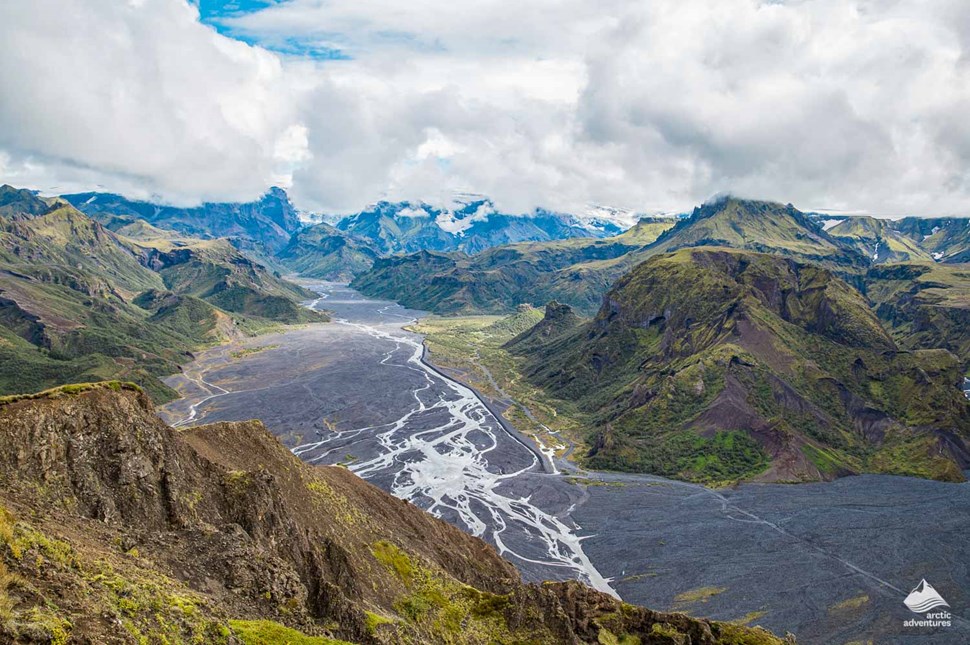
There are a number of official guidelines that are implemented in the cabins. Cleanliness, tidiness, and consideration towards fellow travelers are important. The purpose of these rules is to ensure a comfortable stay for hikers and other travelers:
In general, the best time to take the trail is from the end of June until the middle of September. However, conditions vary, and weather is always subject to change, even in summer snow is not uncommon.
The Icelandic Road Authority closes the roads into Landmannalaugar (F208/F225/F210), as well as the roads to other huts along the way, outside of the summer season.
The trail is usually open from June 25 to September 15.

Everywhere you look on this trail is a good photo opp! Photograph everything so you can remember it forever. A few of the highlights include:
Remember Eyjafjallajökull – the infamous volcano eruption from 2010 that no newscaster in the world could pronounce? From Þórsmörk it is easy to head over the pass at Fimmvörðuháls – the site of the first eruption- to see the two new craters, Magni and Móði. You will see the great glacier volcano, Eyjafjallajökull, probably the most famous volcano in the world!
The trail is well signposted and is popular enough to follow the group ahead while still maintaining distance. However, it is definitely recommended that you go with a professional guide who has travelled this trail many times before. In bad weather and heavy fog, visibility is seriously compromised, making it is easy to lose your way.
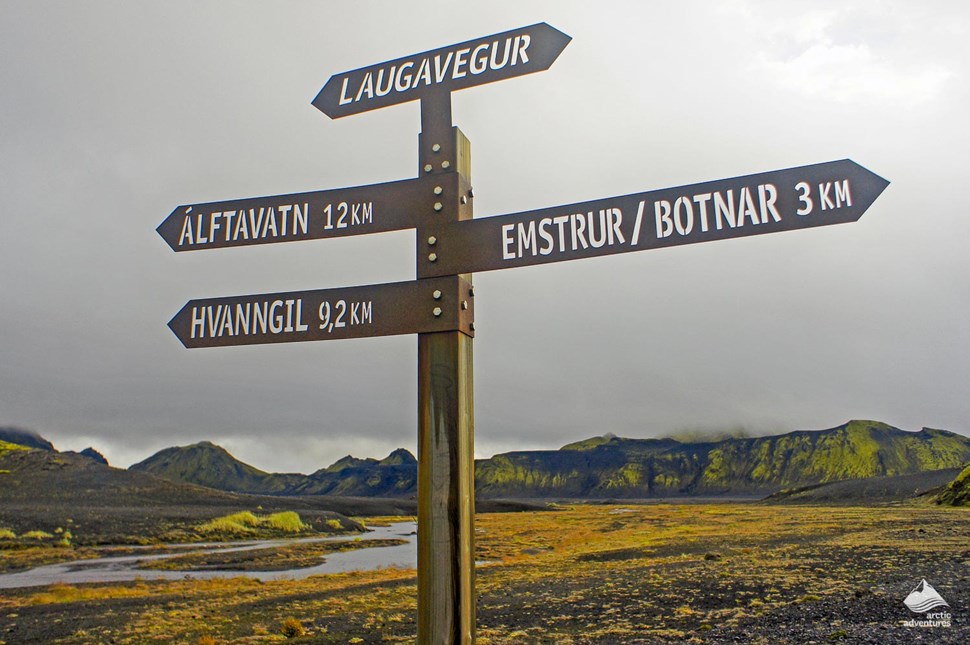
The altitude can reach over 1200 meters at some points, so be prepared for all sorts of weather. This is the Icelandic highland after all!
There are 3 rivers that need to be waded through en route. While the majority of river crossings are via a footbridge, care must be taken when crossing those without.
Unfortunately, Mobile GPS will not help you should you come off track, as internet connection on the trail is weak. There is a connection in and around all the huts and a small fee to recharge devices.
There are some rules when it comes to the trail, relating to maintaining this glorious location:

In short, the trail in winter is potentially lethal.
Hiking the Laugavegur trail is one of the most beautiful hikes in the world, but don’t take too many risks. During wintertime, the trail is best avoided.
Even highly skilled hikers, accustomed to winter travel and carrying the right equipment should be aware of the risks. Additionally, initial access to the trail is restricted during the winter, there are no buses, neither to Landmannalaugar nor Þórsmörk.
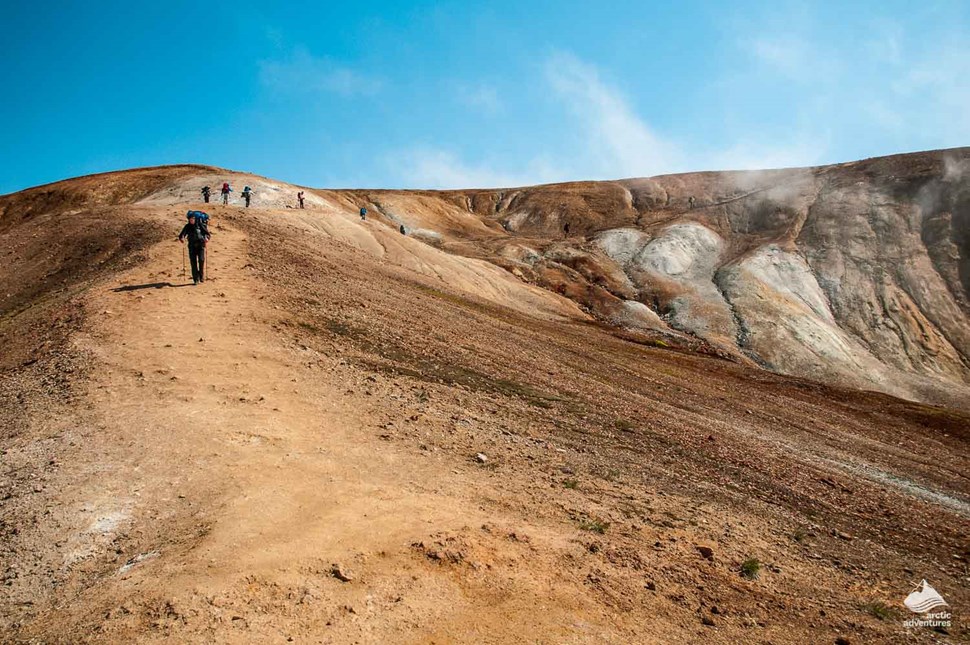
A sturdy 65L backpack with good support is ideal for a solo traveler backpacking via self-drive; while a 25L daypack works great for your own hikes between the huts if you are with a tour company. Self-navigators should pack a handheld GPS, just to be safe.
Your day bag will need to carry spare layers, water, lunch, hot drinks, a first aid kit, swim kit, and a camera or phone. If you are not with a tour group you will need to pack all of your food to last the duration of your hike, so leave about 10L of space for that.
Sturdy sandals or neoprene boots are crucial: whatever route you take, you will be crossing a river at some point. The rocks can be sharp and slippery so take precaution and do not go barefoot.
You will also need a set of walking poles, a head torch, and indoor shoes.
A 4-season sleeping bag is needed if you are using the huts on the route, but you can leave your roll mat behind because there are mattresses provided.

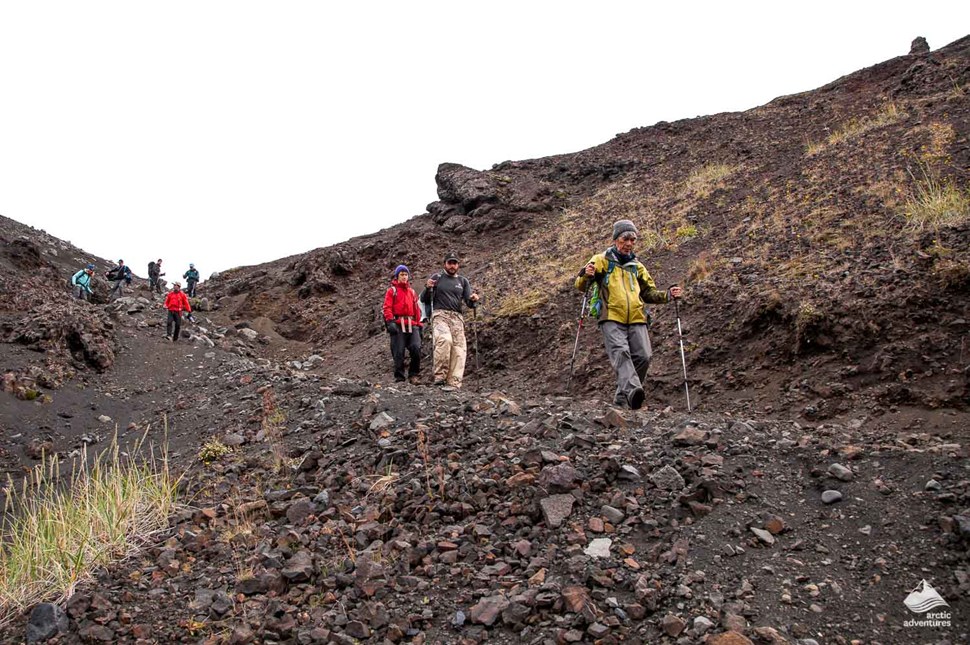
It is essential that you wear good quality, preferably Goretex, waterproof hiking boots that have already been broken in. Likewise, bring high quality, wool walking socks, to avoid potential blisters.
A breathable waterproof jacket with a hood, also preferably Gore-Tex, is a necessity. Waterproof trousers won’t go amiss either!
You will need thermal base layers and from there you can add on extra layers like fleeces and jackets. Just make sure nothing is made of cotton. Layers are vital for hiking so you can easily add on or take off. You want quantity AND quality.
On route, it is a good idea to wear waterproof trousers, gaiters and a microfleece. Also bring a hat, gloves and a buff (neck warmer).